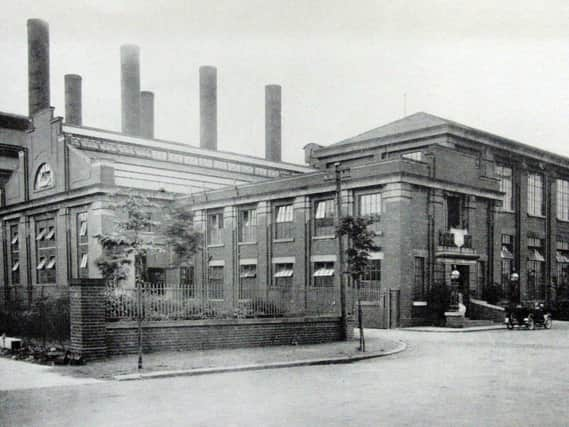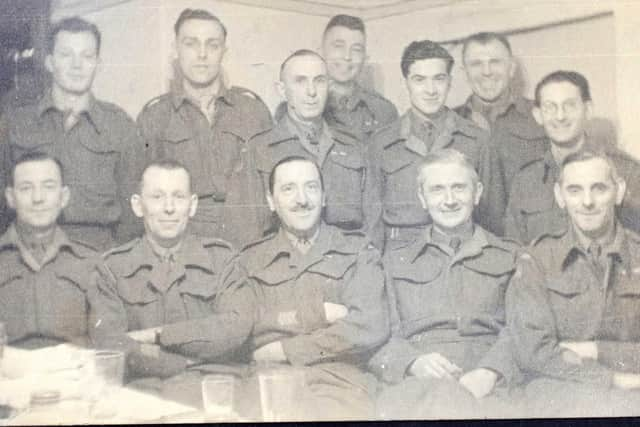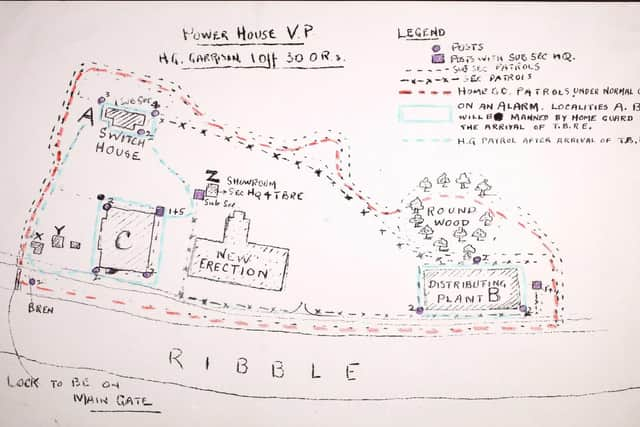Secret plans to defend Preston from a wartime enemy invasion
This article contains affiliate links. We may earn a small commission on items purchased through this article, but that does not affect our editorial judgement.


Fascinating details have been released of plans to defend Preston in the face of a German invasion during Second World War.
Lancashire Archives has teamed up with family history website Ancestry.co.uk to release an online collection of documents from the county’s Home Guard between 1940 and 1945.
Advertisement
Hide AdAdvertisement
Hide AdThe digital resource boasts 60,000 historic records, 5,000 images and provides a fascinating insight into what life was like on the Home Front during Second World War for the so-called ‘Dad’s Army’.


The collection includes lists of Home Guard members during the war years and details of the sort of operations carried out to prepare for the defence of Lancashire from German attack.
One document produced in 1942 for the 8th County of Lancaster (Preston) Battalion of the Home Guard details what action would be taken to protect Ribble Power Station in the face of enemy invasion.
The plan states, “In the event of successful enemy landings by sea or air it is probable that such landings would be accompanied by an all out effort to destroy our war factories and this impede our war effort.
Advertisement
Hide AdAdvertisement
Hide Ad“It is therefore reasonable to assume that such landings would be accompanied by parties of saboteurs or agents landed by parachute in any part of No 23 Sector with the object of (a) the damaging of production plans and (b) the destruction of vulnerable points such as Ribble Power Station which are of vital importance to our war factories as well as the normal life of the inhabitants.”


The power station was under the regular guard of one officer and 30 men from the Home Guard’s South Lancashire Battalion and if the alarm was raised the garrison would be reinforced by members of Training Battalion Royal Engineers.
The plan goes on, “The Ribble Power Station will be actively guarded by all troops both regular and Home Guard against any form of attack or enemy interference. Under normal circumstances the Home Guard will patrol the wire fence round the perimeter.
“On an alarm... the Switch House, Extra High Tension open air sub station and the Main Office Block and Old Power House will be manned by the Home Guard.”
Advertisement
Hide AdAdvertisement
Hide AdThe plan then would have been for the Training Battalion Royal Engineers to scramble to the facility and assume control of military operations.
A system of blue and green coded lighting would alert the Home Guard to the arrival of the support at the power station to ensure they were allowed to gain access and were confirmed as non-hostile forces.
The plan continues, “Rifles and Stens will not be loaded but the Picquet [armed platoon] will carry 10 rounds of small arms ammunition or Sten magazines in their pockets.
“Orders to load will only be given by the officer in change of the guard.”
Advertisement
Hide AdAdvertisement
Hide AdThe newly digitised Lancashire records also houses records of the Longridge-based 5th County of Lancaster (Preston County) Battalion of the Home Guard.
Among the documents is a four page report detailing where all of the battalions fortifications were dotted around the area.
The List of Defence Works, produced in Febnruary 1945 reveals such information as a brick gun post at Dixon’s Farm, in Grimsargh, which the report’s author felt the farmer might be willing to buy from them
Other curious spots include a cottage on the Lancaster Canal at Bartle with, “three apertures in the exterior wall facing the canal to be used as loopholes in an emergency”; a machine gun emplacement at the Cartford Hotel, in Little Eccleston; look out posts on Longridge Reservoir and two trenches and a wire entanglement at the Elletson Arms Hotel, in Pilling.
Advertisement
Hide AdAdvertisement
Hide AdPill boxes are also pinpointed right across the Wyre countryside and gun emplacements on the seawall at Preesall adjacent to aircraft landing obstacles on the beach.
The newly published archives on Ancestry.co.uk are listed by battalion, and feature Home Guard volunteers enlistment, transfers, promotions, resignations and death.
Some Home Guard records have also been linked back to a 1939 register, offering further detailed information including birth dates, religion, previous service and next of kin too.
The collection spans the old county of Lancashire and includes the youngest member of the Home Guard in the region Norman Bromley, wh0 was just 14 when he enlisted, and the oldest a Sergeant T Mooney who volunteered at the age of 70.
Advertisement
Hide AdAdvertisement
Hide AdKristian Lafferty, content acquisition manager at Ancestry, said: “We’re thrilled to be working with Lancashire Archives to make this unique collection of records available online for the first time. The records are an invaluable resource for those looking to research their family history in Lancashire.
“Nominal lists of volunteers combined with individual’s letters, orders, instructions, and other documents provide an interesting glimpse into the Lancashire Home Guard during the Second
World War, and thus an important part of what life was also like on the Home Front too.’’
To find out more visit Ancestry.co.uk
Comment Guidelines
National World encourages reader discussion on our stories. User feedback, insights and back-and-forth exchanges add a rich layer of context to reporting. Please review our Community Guidelines before commenting.